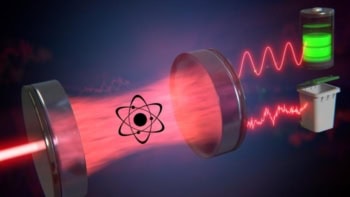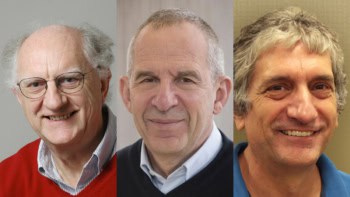Two macroscopic objects have been 'entangled' for the first time. Eugene Polzik and colleagues at the University of Aarhus in Denmark entangled two samples of caesium atoms, each containing about 1012 atoms, for half a millisecond - a long time by quantum standards. This demonstration could form the basis of new forms of 'quantum teleportation' and quantum computers (B Julsgaard et al 2001 Nature 413 400).

Entanglement is a feature of quantum mechanics that allows particles to share a much closer relationship than classical physics permits. A measurement on one part of an entangled system reveals the properties of the other part, even if they are physically separated.
Polzik and co-workers injected the caesium atoms into two cylindrical glass cells lying end to end, but separated by a few millimetres of air. The team then shone a pulse of right-handed circularly polarized light through one cylinder so that the spins of the atoms in that cell were aligned with each other. A left-handed pulse aligned the spins in the other cell in the opposite direction.
To entangle the atoms in the cells, a single polarized laser pulse passed through both cells. The momentum of the light changes the spin of the atoms in each cell slightly, by an equal and opposite amount. This means they are entangled – the exact spin of the atoms in each cell is unknown, but a measurement of the spin of one sample would reveal the spin of the other sample.
Since the spins of the atoms also change the momentum of the light as it passes through, a measurement of the light as it exits the second cell revealed the average spin of the two samples. This showed that entanglement had taken place.
Half a millisecond later, Polzik and colleagues sent a second pulse of linearly polarized light through both cells. Again, this changed the spins slightly, but the researchers found that the average spin was the same – this revealed that the entangled state was still intact. Systems containing just a few atoms have been entangled for longer periods, but the Aarhus result is a record for macroscopic objects.
‘We have achieved entanglement with a single pulse of light, so in theory the samples can be placed at a considerable distance apart’, Polzik told PhysicsWeb. ‘This makes it the first type of entanglement useful for teleportation of atomic states and other types of quantum communication’.



